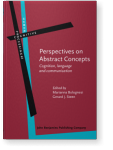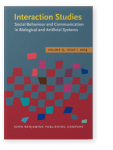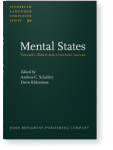Anna Maria Borghi
List of John Benjamins publications for which Anna Maria Borghi plays a role.
2019 Chapter 2. Abstract concepts and the activation of mouth-hand effectors Perspectives on Abstract Concepts: Cognition, language and communication, Bolognesi, Marianna and Gerard J. Steen (eds.), pp. 43–58 | Chapter
Embodied and grounded approaches to cognition have compellingly demonstrated that we comprehend concrete words simulating their meaning through our sensorimotor system (Barsalou 2008). Abstract words, i.e., words that do not have a single and concrete referent, are more difficult to account for in… read more
2019 Chapter 5. Is the acoustic modality relevant for abstract concepts? A study with the Extrinsic Simon task Perspectives on Abstract Concepts: Cognition, language and communication, Bolognesi, Marianna and Gerard J. Steen (eds.), pp. 101–118 | Chapter
An emerging class of theories of knowledge assumes that the representation and processing of concepts is achieved by reactivating multiple aspects of experience. Abstract concepts such as freedom and justice constitute a challenge for these theories because they have no clearly identifiable… read more
2014 Verb concepts from affordances Interaction Studies 15:1, pp. 1–37 | Article
In this paper, we investigate how the interactions of a robot with its environment can be used to create concepts that are typically represented by verbs in language. Towards this end, we utilize the notion of affordances to argue that verbs typically refer to the generation of a specific type of… read more
2007 8. Do we access object manipulability while we categorize? Evidence from reaction time studies Mental States: Volume 1: Evolution, function, nature, Schalley, Andrea C. and Drew Khlentzos (eds.), pp. 153–170 | Article


